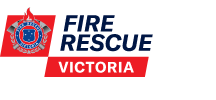
This research utilisation initiative drew on findings from the Bushfire and Natural Hazards CRC’s Child-Centered Disaster Risk Reduction project to develop Schools in Fire Country - a place-based, participatory, curriculum-aligned bushfire education program for Victorian upper primary school students. Built on the best available evidence and supported by multi-agency, cross-sector collaborations, the program empowers students with the knowledge, skills and resources they need to navigate the complexities of bushfire risk management within their households, schools and communities.
Background and context
Australian children are growing up in a socio-ecological context of escalating bushfire risk. Climate change is increasing the frequency, intensity and magnitude of bushfire events. At the same time, ongoing urban development in bushfire-prone areas is exposing more people to the impacts of bushfire hazards. As highlighted in every formal bushfire inquiry since 1939, school-based bushfire education represents a key mechanism for managing bushfire risk and enhancing community capacities for effective mitigation, preparedness and response.
While school-based bushfire education has only become a subject of serious academic inquiry in the last decade, empirical evidence generated through the Child-Centred Disaster Risk Reduction project and other international research studies clearly demonstrates that the most impactful programs and initiatives are characterized by five key features:
- transdisciplinary curriculum design;
- place-based pedagogy;
- action-oriented learning goals;
- student voice and agency; and
- collaboration and partnership across the fire management and education sectors.
The goal of this research utilisation project - co-funded by the Victorian Government Safer Together program, Victorian Country Fire Authority and Natural Hazards Research Australia - was to harness the available research evidence, alongside the collective expertise of educators and fire managers, to develop an effective, sustainable, and scalable school-based bushfire education program for Victorian primary schools. This goal has been achieved through a collaborative, iterative, and human-centered design process that culminated in the creation of Schools in Fire Country.
Project methodology
The Schools in Fire Country research utilisation project employed a human-centred design methodology which put the needs and priorities of educators, fire managers and students at the heart of program development. The development process involved 6 core activities:
- Establishment of an expert working group to facilitate genuine collaboration between state government fire agencies, the education sector, Traditional Owner groups, academia, and the broader emergency management sector.
- Empathising with key partners to understand the needs, priorities and expectations of program end-users and identify the challenges and opportunities associated with school-based bushfire education in Victorian primary schools.
- Defining and analysing the key barriers and enablers to the sustainable and scalable implementation of evidence-informed bushfire education from the perspectives of students, teachers, school leaders and community partners.
- Drawing on the collective knowledge and experience of the expert working group to ideate the core features of a bushfire education program that would be desirable, feasible and viable in the dual context of the emergency management and education sectors.
- Collaborating with the expert working group on the development of a prototype program model, which included a curriculum-aligned learning scope and sequence, supporting teaching and learning resources, and a strategic plan for collaborative implementation.
- Conducting school-based trials at two Victorian Primary Schools to test and refine the prototype program model and provide teachers, students and community partners with an opportunity directly the influence the design process.
Project outcomes
As of February 2025, this research utilisation project has achieved the following outcomes:
- Development of a robust program framework comprised of five core elements:
- An authentic project-based learning model that encourages students to exercise their agency as learners and citizens who can make a valuable contribution to bushfire community safety.
- A comprehensive suite of curriculum-aligned teaching and learning resources that support place-based, participatory learning and action.
- A collaborative implementation strategy that enables the education and bushfire management sectors to work together in ways that capitalise on their respective capabilities, resources and areas of expertise.
- Professional learning opportunities that build capability and capacity for effective and sustainable program delivery in local school communities.
- A monitoring, evaluation and reporting plan that informs data driven continuous improvement of the program framework and its constituent elements.
- Construction of a beta website that hosts the program resources in an easily accessible format for teachers, school leaders and community partners.
- Production of four introductory videos that provide an overview of the Schools in Fire Country program and its authentic project-based learning model.
- Publication of five practice briefs that outline the program development process and provide a blueprint for the creation of other good-practice disaster resilience education programs.
- Delivery of a webinar on the development of the Schools in Fire Country program and the outcomes and impacts of program delivery at Harkaway Primary School and Chewton Primary School.
- Establishment of a steering committee comprised of senior decision-makers from the Victorian education and emergency management sectors to inform strategic decision-making regarding the scaled implementation of the program across Victoria.
Project impact
The Schools in Fire Country project has had tangible impacts on policy and practice from the local to the State level:
- The State Government Implementation Plan 2024 – 27 for Victoria’s Bushfire Managment Strategy includes Action 1e: Implement the Community First Program – Deliver a research-informed, child-centred, multisector program to support curriculum-aligned delivery of participatory bushfire education in schools.
- The Victorian Emergency Management Strategic Action Plan 2023–26 includes Action 3.3: Support the design and implementation of research-informed school-based education programs that engage children and youth as genuine participants in emergency management (with an initial focus on bushfire).
- The two schools involved in the program development process – Harkaway Primary School and Chewton Primary School – have now embedded the program in their teaching and learning cycle and are implementing the program with their grade 5/6 students on a biannual basis
In early 2024, Schools in Fire Country was awarded $610,000 from the National Emergency Management Agency’s Disaster Ready Fund to further build capability and capacity for scalable and sustainable implementation in high bushfire risk areas across Victoria. As of February 2025, this funding has supported program delivery in five new primary schools, which has provided valuable opportunities for the ongoing testing and refinement of the program framework and supporting resources.
The impact of the Schools in Fire Country project on policy and practice has been nationally recognised with an Emergency Media and Public Affairs award for Excellence in Emergency Communication - Community Engagement. Harkaway Primary School’s contributions to the development of Schools in Fire Country have also been honoured with a Disaster Resilient Australia National Schools Award.
| Year | Type | Citation |
|---|---|---|
| 22/09/2022 | Book chapter | Reimagining Education in a Pandemic: Children and Young People as Powerful Educators |
| 08/12/2021 | Book chapter | Fire as Unruly Kin: Curriculum Silences and Human Responses |
| 12/2019 | Journal article | School-based bushfire education: advancing teaching and learning for risk reduction and resilience |
| 01/2020 | Book chapter | Impacts of Wildfire on Children |
| Date | Type | Title |
|---|---|---|
| 3 May 2023 | Presentation | Briony Towers and Neil Munro - 2023 Natural Hazards Research Forum presentation |
| 14 January 2025 | Practice note | Practice Note 2.1: A research-informed approach to bushfire education for Victorian primary schools |
| 14 January 2025 | Practice note | Practice Note 2.2: Beginning the journey |
| 14 January 2025 | Practice note | Practice Note 2.3: The Harkaway trial |
| 14 January 2025 | Practice note | Practice Note 2.4: The student showcase |
| 14 January 2025 | Practice note | Practice Note 2.5: Making new connections |
| 1 March 2024 | Audio-video | Schools in Fire Country Introductory Videos |






